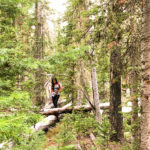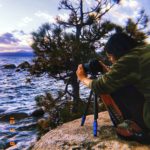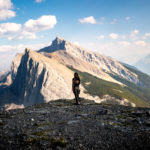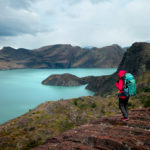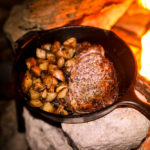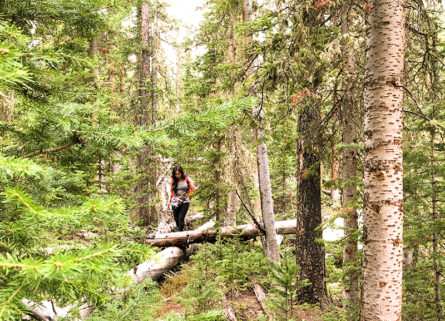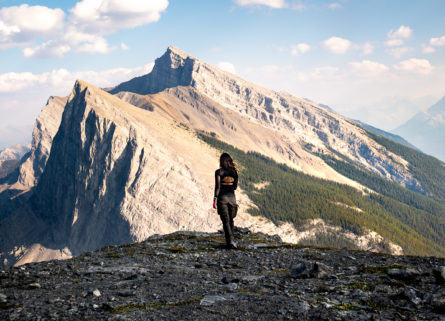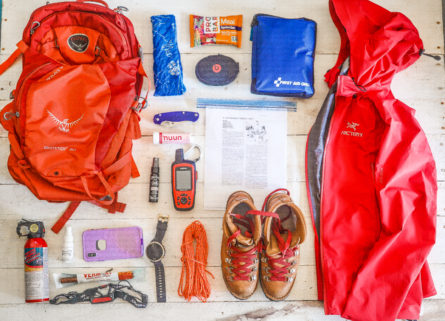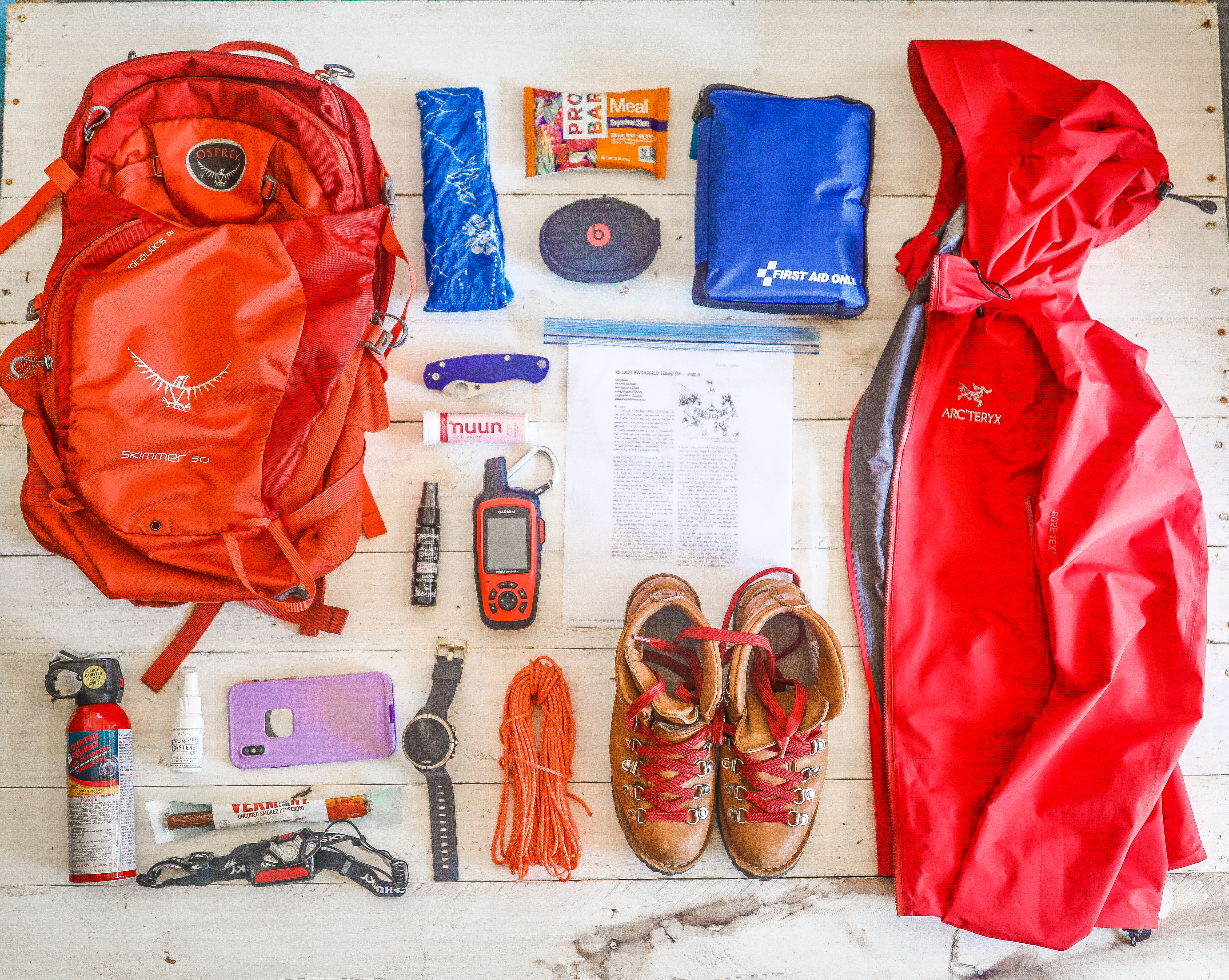
In a few days, I’m heading out to the gorgeous “Canadian Rockies” where I plan to hike alone and find the perfect place to lay part of my mom’s ashes.
Unlike most of the trips I’ve taken in the past, I have zero intentions of eating my way through this area of the world, and have every intention of immersing myself in its mountains, turquoise blue lakes, valleys of fireweed and every thing else in between. I’ve never been more excited and terrified at the same time though, because I’ll be wandering alone through a place they also call “grizzly country.” Follow me on instagram @jennielingtai as I livestream my hikes on IGTV later this week.
As a mother, I always feel some level of pressure and guilt in hiking alone (no matter where it is), and take extra safety precautions because I have to make sure I get home to my kids, no matter what. The amount of things I bring on solo hikes may seem a little ridiculous to some, but my kids are top of mind, so I’m not taking any chances and am buying every bit of insurance (which you’ll see in the list). In Alberta, I’ll be hiking in an area I’m not familiar with, on terrain I’ve never experienced before, scrambling on scree, straddling a knife’s edge for the first time; all among a larger array of predatory wildlife (grizzlies, mountain lions and wolves to name a few) than what I’m used to in Virginia. On top of this – I’m visiting during a time of the year when these animals are most active, so this list takes all of that into consideration as well.
First aid kit
Even when I’m not hiking, I carry one in each of my cars, and anywhere I go with my kids. A first aid kit is pretty standard for any hike olo or not), but you don’t have to carry around the massive box it normally comes in. There are minimalist versions that have all the essentials but with less of each item to consolidate space, like this 23 piece medical kit. What’s pictured above is one of the larger ones I own, and isn’t what I’m actually bringing on my hike. The one I’m actually bringing is on its way to me. 🙂
GPS Watch
I love my Suunto Spartan Ultra, and never hike without it (the Garmin equivalent is the Fenix 5X). I don’t trust my instincts just yet when it comes to following trails, so I always download maps from Alltrails and load them on to my Suunto to make sure I’m following the right path. It also serves as a compass, heart rate monitor, and will tell you how far you’ve gone, your elevation gain, and even if a storm is on its way. What’s also great for photographers is that it will tell you when the sunset and sunrise is depending on your location, so you always know whether you’re on track to make it in time for that sunset or sunrise photo.
Bear spray
This version comes with a chest and side holster. Bear spray is also standard for any hike, and you can even bring Bear bangers, wear bear bells or bring a bear horn if you want to. Bear spray is basically an extra-strength pepper spray you can use if a bear attacks. In Virginia, black bears don’t normally get very large (I’ve been told you can probably fight them off) but if you don’t want to take your chances, bring bear spray 🙂 I had to watch someone unlock it a few times to understand how to use it, so I’d recommend nailing that down before you head out.
Knife & Cord
A utility knife can be used to cut gauze, or moleskin for wounds; to preparing food, fires, or can be used to cut cord, which I bring in case I need to rig a tarp, hang a bear bag (if I camp) – you never know. I’ve seen someone use it to relace their shoes in the middle of a backpacking trip, after their original laces were chewed by animals overnight. Like I said – you never know. 🙂
Personal beacon
I don’t care how ridiculous this sounds. A personal beacon obviously isn’t critical, and is more often used by divers – but if you don’t have a GPS and don’t know your trail very well – bring one if you can afford it. It’s helpful if you get lost, or injured and cannot move. This dual GPS and personal beacon offers full satellite coverage for two way texting from anywhere, and has an SOS button that will call for help no matter what day or time it is. I would rather bring a beacon than get wedged between rocks, having to amputate my own arm off in order to flag someone down for help
Hydration tablets
If you’re as bad as I am at remembering to stay hydrated – these tablets can be a lifesaver if you’re alone and forget to drink your water. I normally have friends who remind me to drink during hikes, but it’s often the last thing I think about when I’m alone. You can put these tablets in your bladder or water bottle before your hike, OR if it’s too late and you’re already dehydrated, you can chew the tablets on their own. My favorite ones are by Nuun in strawberry lemonade
Protein
After having kids and gaining about 80 unwanted pounds, I spent a long time eating little to nothing, drinking juice to replace two of my daily meals, and eating a tiny dinner to slowly and steadily lose all of the weight. I didn’t eat very much, and thought I could get away with the same diet on one of my first hikes and will never do it again. My friend and I stopped in the middle of a hike so he could eat pepperoni and bacon, and I just sat and waited for us to get back to finishing the hike, because I didn’t want to eat. By the time I got up there in the evening, having skipped lunch all together, I was delirious, and physically useless. Long story short – I eat a lot of protein before and after hiking, and I always bring a ton of snacks and jerky with me. My favorite brand of consciously crafted jerky is from a smokehouse in Vermont.
Rain jacket
I don’t go anywhere without my rain jacket, regardless of whether it’s on a solo hike or not. I love mine because it’s durable and thin enough to roll up into my pack, but this is another favorite among some of my fellow female hiking friends. One of the most miserable things is having to walk for hours in soggy clothes, hair and shoes.
Whistle
A whistle is normally built into standard hiking backpacks (especially for women and children), but if you don’t have one – it’s helpful to bring one if you don’t bring a beacon, and get stuck somewhere you need to call for help. If you watched Prisoners, you’ll probably remember how important that whistle was at the end when Hugh Jackman laid half dead at the bottom of a ditch, using what was left of his lungs to blow into it for help when Jake Gyllenhaal walked by, wondering where the noise was coming from.
Headlamp
I bring a headlamp even if I don’t plan to camp, because if I’m hiking solo – it’s normally to either catch a sunrise, or a sunset – which also means I will get caught in the dark depending on how far into the hike I had to go to see the sunset, or how long I stayed after the sunset to take photos of it melting into the night.
Sturdy boots
I have a big fear of twisting or messing up my ankles when I’m alone (because I know I’ll probably be stuck wherever I am and that no one will be able to carry me out), so I prefer high rise boots with reliable ankle support. I don’t care where I’m going, what type of terrain it is, or how light I need my boot to be – if I go alone, I have to feel like my ankles are safe and protected. The ones pictured are ones I currently own, but I’ve heard good things about these and have been eyeing them for a while.
Trekking poles
I made fun of my friend for using these once, and never did it again when I went on my first, real hike. One where it was a long, steady climb that required me to have to cross through a few streams, straddle a few logs and use my core, back, legs and arms to compensate for the balance and support I deprived myself because I was too cocky to bring what I called “old people sticks”. Never mind the fact that they can serve as protection, or be used as a tripod if you’re a photographer, but you save so much more time and energy using trekking poles.
Bug spray
I can deal with mosquito bites and obnoxious gnats in my face – but not ticks. Like I said earlier, my top of mind goals are in staying alive for my kids, so avoiding lyme disease, which can complicate your nervous system, your heart or joints, and (sometimes) can be fatal, is not a risk I want to take, no matter how much I hate putting rough chemicals on my skin.
Hand sanitizer
To avoid open wound or eye infections, or getting sick from ingesting the wrong bacteria from eating with your hands. I bring a bottle everywhere I go (hiking or not), because you never know.
Waterpoof phone case
If you want to rely on your phone instead of a beacon or GPS, then you should get a sturdy, waterproof case to protect it to make sure it survives your hike.
External battery
In case you get lost and need more juice for your phone or GPS
Situational awareness headphone
The silence makes me a little anxious whenever I hike alone, so sometimes I’ll bring headphones to play music. However, it’s obviously not the safest thing to do if you aren’t on a well-trafficked path, so when I feel like I need to be more aware of my surroundings – I use situational awareness headphones, which uses bone-conduction technology to deliver music through your cheekbones instead of your ears so that you can still hear your surroundings while you listen to music. If you’re a swimmer, you may have used these or something similar before. I wore these when I swam laps, and wear them now when I hike.
Waterproof map
This is a tip I got from my cousin when I first went hiking with her, and something I’ll always do, whether I bring my GPS gear or not. Sometimes your GPS is hard to read, and you may prefer to just read its directions, or see a larger version of a map that may not always fit on your phone screen.
—
Obviously you don’t have to bring everything on this list in order to survive a solo hike, but I hope it gives you an idea of what you could bring to make you feel safe and prepared.
Lastly – never let anyone shame you for being overcautious or over prepared. It’s your life, your backpack, and you’re the one who’s going to carry and feel the weight, so it’s your decision whether you want to be safer than sorry.
Hope this helps. Happy hiking! 🙂

